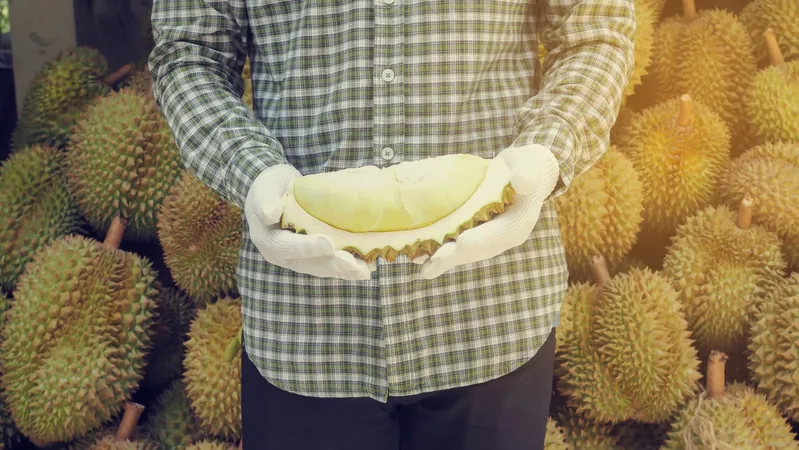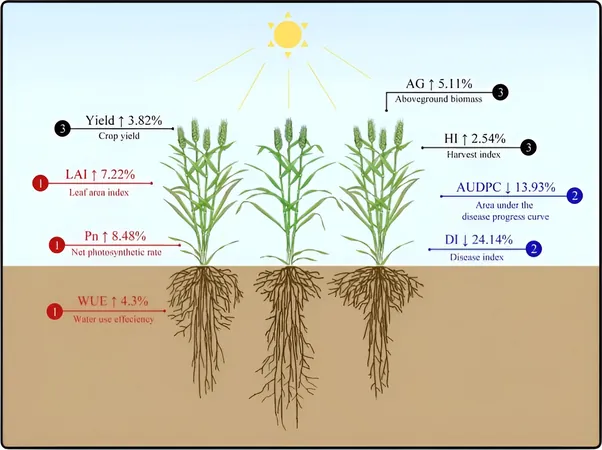
Dengue Vector Review in Cambodia: An In-Depth Look at Aedes Mosquitoes
2024-10-09
Author: Nur
Key Findings on Aedes Mosquito Species
The study focuses on four primary Aedes mosquito species: Aedes aegypti and Aedes albopictus, both confirmed dengue virus vectors, along with Aedes malayensis and Aedes scutellaris, which are categorized as potential vectors.
Distribution Insights: Aedes aegypti has been identified in 15 out of 25 provinces in Cambodia, while Aedes albopictus has been confirmed in 13 provinces. Aedes aegypti’s presence spans urban areas, making it a crucial vector in densely populated regions such as the capital city, Phnom Penh. In recent fieldwork, the existence of both species was documented in previously unrecorded provinces, highlighting their adaptability and wide distribution across varying habitats from forests to cities.
Ecological Conditions and Breeding Habitats
Aedes aegypti thrives in urban environments, predominantly breeding in artificial containers such as water storage jars, tires, and bottles. These habitats are significantly affected by seasonal rainfall, with the highest breeding activity noted during the rainy season. In contrast, Aedes albopictus is more versatile, occupying rural and forested areas as well as urban settings, marking its adaptation to human changes in the environment.
Vector Competence and Transmission Dynamics
Research reveals that Aedes aegypti is a significant vector for dengue, with studies indicating high rates of infection when exposed to dengue strains. A notable finding is the virus's higher infectivity during the rainy season. Meanwhile, Aedes albopictus, previously viewed as less competent, has shown rising infection rates in urban settings.
Insecticide Resistance: A Growing Challenge
One of the most alarming outcomes of the review indicates a growing trend of insecticide resistance among both mosquito species. Aedes aegypti has demonstrated moderate resistance to commonly used insecticides like temephos and permethrin. Recent studies on Aedes albopictus also reveal alarming resistance rates, signaling an urgent need for new vector control strategies.
Control Strategies: What Works?
Various strategies have been employed in Cambodia to combat dengue transmission. These include biological controls such as introducing guppy fish into water storage and community engagement initiatives. Despite the effectiveness of these interventions, the growing insecticide resistance poses a severe challenge to public health efforts aimed at controlling mosquito populations.
Conclusion: A Call for Action
This review not only emphasizes the critical roles of Aedes aegypti and Aedes albopictus in the transmission of dengue but also stresses the need for ongoing research and innovative control strategies. With climate change and urbanization continuing to influence mosquito behavior and density, public health authorities must adapt rapidly to manage the increasing threat of dengue fever in Cambodia.
Stay Informed: With the rise of dengue and the challenges posed by mosquito resistance, it’s crucial to keep abreast of new findings and strategies in vector control. Don't let dengue catch you off guard—knowledge is your best defense!



 Brasil (PT)
Brasil (PT)
 Canada (EN)
Canada (EN)
 Chile (ES)
Chile (ES)
 España (ES)
España (ES)
 France (FR)
France (FR)
 Hong Kong (EN)
Hong Kong (EN)
 Italia (IT)
Italia (IT)
 日本 (JA)
日本 (JA)
 Magyarország (HU)
Magyarország (HU)
 Norge (NO)
Norge (NO)
 Polska (PL)
Polska (PL)
 Schweiz (DE)
Schweiz (DE)
 Singapore (EN)
Singapore (EN)
 Sverige (SV)
Sverige (SV)
 Suomi (FI)
Suomi (FI)
 Türkiye (TR)
Türkiye (TR)